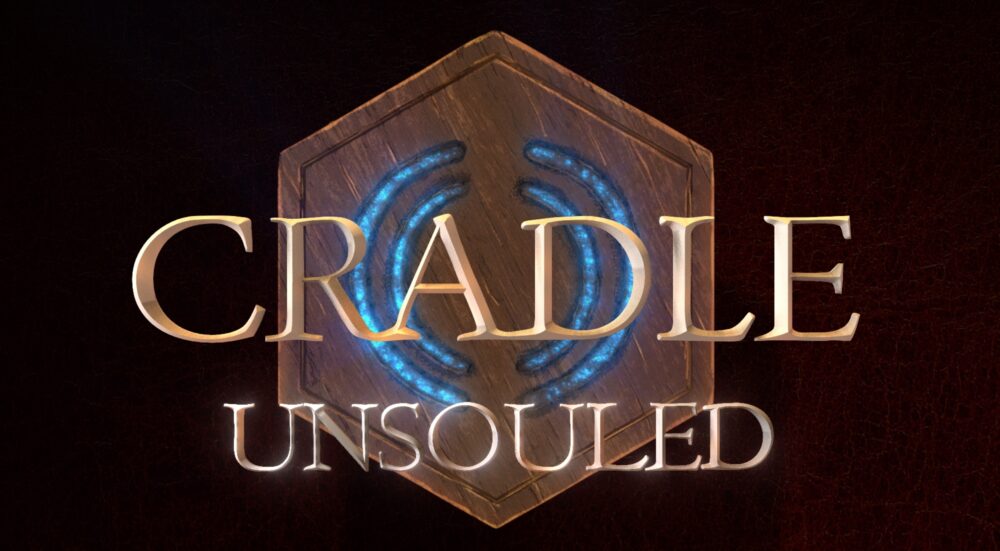Last Night Comic Con@Home took attendees on a deep dive into the world of Mystery Science Theater 3000. The long running show has taken on many incarnations over the decades and the panel included show creator Joel Hodgson as well as former cast members J. Elvis Weinstein and Bill Corbett.
The vibe was distinctly different for this comic con as everyone met at home through video conferencing. The effect is a panel that feels distinctly intimate though occasionally lacks the electricity of the standard convention. But no level of a pandemic can take away the pleasure of watching three great comedians get together and talk about the history of one of the most innovative shows ever created.
Their combined history spans the entire length of the show giving some fascinating insights into the evolution of the characters. Tom Servo, for instance, started out as Beeper an R2D2-style character that only really shows up in the first few episodes of KTMA. The character then took on a Pee-Wee Herman persona but after that didn’t gel he eventually turned into a kind of radio show host voice. Though they may seem like minor tweaks those choices went on to influence to the trajectory of the character for more than two decades.
Joel, on the other hand, notes that he wasn’t sure how to originally approach the role of host on the show. For avid viewers of MST3K the host role evolved the most through the decades. With three (four if you count the COVID Riffathon that went on Youtube) hosts and counting each one has approached it in a new way. Hodgson laid the groundwork by treating the bots like a father or an uncle.

Courtesy of Comic-Con International youtube
Though fairly common now (thanks to MST3K, whether you know it or not) the act of riffing was breaking new ground as the show was created. After watching the show for years the ability of a riff to land or not land is key. Joel, Bill and J. Elvis shared insight into what makes it work and it’s not what you would expect.
“I think there’s a myth that we only wrote riffs for ourselves and that’s just not true,” noted Corbett. “Very often I’d write riffs for the others and it wasn’t even something you think about.” This is in contrast to the Joel era where it went in a round-robin fashion. “If you notice I got every third line in the show, we wanted to pass the joke around,” said Hodgson.
The unifying factor among all of their experiences was, unsurprisingly, the film itself. “In the beginning, we were much quieter and didn’t realize you had to riff through the whole thing,” Hodgson explains. “Once we got to Comedy Central we knew you had to do wall-to-wall jokes and treat the film like an acting partner,” Hodgson notes that you had to treat the film like it was Margaret Dumont in a Marx Brothers film. You had to make fun of it like it was in the room with you. That adds a whole new layer to shows.
Watching them all interact is always fun. Despite the gap in their experiences with the show they all more or less knew each other from Minnesota and treat each other like life long friends and colleagues. Something about the format of the show continues to give it new life and allow it to evolve. Even though no one on the panel is currently working with MST3K they continue to riff through mediums like Cinematic Titanic and Rifftrax. They are constantly creating new content and evolving the art of the riff. It’s a sight to behold. Watch The Full Panel Here

Events
Paramount+ Reveals Official Main Title Sequence for the Upcoming Series TALES OF THE TEENAGE MUTANT NINJA TURTLES

During the TALES OF THE TEENAGE MUTANT NINJA TURTLES panel earlier today at San Diego Comic Con, Paramount+ revealed the official main title sequence for the series. The sequence is composed by EMMY® nominee, Matt Mahaffey, known for his work on Sanjay and Craig, Rise of the Teenage Mutant Ninja Turtles, and Rise of the Teenage Mutant Ninja Turtles: The Movie and much more.
From the studios of the Mutant Mayhem film, the all-new Paramount+ original series TALES OF THE TEENAGE MUTANT NINJA TURTLES explores the adventures of everyone’s favorite pizza-loving heroes as they emerge from the sewers onto the streets of NYC. Leo, Raph, Donnie and Mikey are faced with new threats and team up with old allies to survive both teenage life and villains lurking in the shadows of the Big Apple. The series is produced by Nickelodeon Animation and Point Grey Pictures.
TALES OF THE TEENAGE MUTANT NINJA TURTLES is executive produced by Chris Yost (The Mandalorian, Thor: Ragnarok) and Alan Wan (Blue Eye Samurai, Rise of the Teenage Mutant Ninja Turtles, Teenage Mutant Ninja Turtles [2012 Series]). Production is overseen for Nickelodeon by Claudia Spinelli, Senior Vice President, TV Series Animation, Nickelodeon, and Nikki Price, Director of Development and Executive in Charge of Production.
In addition to the upcoming new series, stream all things Turtles on Paramount+.
Events
Comic-Con 2024: Those About to Die Activation
Events
DISNEY+ CASTS DANIEL DIEMER AS FAN-FAVORITE ‘TYSON’IN SEASON TWO OF “PERCY JACKSON AND THE OLYMPIANS”

in Hall H at San Diego Comic-Con, Rick Riordan and Disney+ revealed that Daniel Diemer (“Under the Bridge”) will star as fan-favorite cyclops “Tyson” in the epic adventure series “Percy Jackson and the Olympians.” Diemer joins Walker Scobell (Percy Jackson), Leah Sava Jeffries (Annabeth Chase) and Aryan Simhadri (Grover Underwood) as a series regular. The Disney+ Original series from Disney Branded Television and 20th Television will start filming its second season next week in Vancouver.
Season two of “Percy Jackson and the Olympians” is based on the second installment of Disney Hyperion’s best-selling book series titled “The Sea of Monsters” by award-winning author Rick Riordan. In the new season, Percy Jackson returns to Camp Half-Blood one year later to find his world turned upside down. His friendship with Annabeth is changing, he learns he has a cyclops for a brother, Grover has gone missing, and camp is under siege from the forces of Kronos. Percy’s journey to set things right will take him off the map and into the deadly Sea of Monsters, where a secret fate awaits the son of Poseidon.
Diemer stars as Tyson – a young Cyclops who grew up all alone on the streets, and finds it difficult to survive in the human world. Shy and awkward, with a heart almost as big as he is, Tyson soon discovers that Poseidon is his father, which means Percy Jackson is his half-brother… and that Tyson may have finally found a home.
Diemer recently starred in the Hulu limited series “Under the Bridge” based off the critically acclaimed book of the same name and a tragic true story of a missing teen girl in Vancouver in 1997. He will next star in the indie “Thug” opposite Liam Neeson and Ron Perlman for director Hans Petter Moland. Daniel was recently seen as the lead in the indie “Supercell” opposite Alec Baldwin and Skeet Ulrich and the lead in the film “Little Brother” opposite Phil Ettinger and JK Simmons. Daniel can also be seen in the Netflix series “The Midnight Club” and recently starred as the male lead in the breakout hit Netflix feature “The Half Of It” from producer Anthony Bregman and director Alice Wu. He is a graduate of Victoria Academy of Dramatic Arts in Vancouver.
Created by Rick Riordan and Jonathan E. Steinberg, season two of “Percy Jackson and the Olympians” is executive produced by Steinberg and Dan Shotz alongside Rick Riordan, Rebecca Riordan, Craig Silverstein, The Gotham Group’s Ellen Goldsmith-Vein, Bert Salke, The Gotham Group’s Jeremy Bell and D.J. Goldberg, James Bobin, Jim Rowe, Albert Kim, Jason Ensler and Sarah Watson.
The first season of “Percy Jackson and the Olympians” is available on Disney+
-

 Interviews1 day ago
Interviews1 day agoInterview With Heroes & Villains Creative Director Doug Johnson
-

 Streaming1 day ago
Streaming1 day agoApple TV+ announces season two for delightful kids and family series “Camp Snoopy
-

 Events1 day ago
Events1 day agoThat’s My E Coverage Of The Adult Swim’s Pirate Parrrty
-

 Events13 hours ago
Events13 hours agoParamount+ Reveals Official Main Title Sequence for the Upcoming Series TALES OF THE TEENAGE MUTANT NINJA TURTLES
-

 Events16 hours ago
Events16 hours agoDISNEY+ CASTS DANIEL DIEMER AS FAN-FAVORITE ‘TYSON’IN SEASON TWO OF “PERCY JACKSON AND THE OLYMPIANS”
-

 Interviews17 hours ago
Interviews17 hours agoComic-Con 2024: Will Wight’s Cradle
-

 Events15 hours ago
Events15 hours agoComic-Con 2024: Those About to Die Activation



